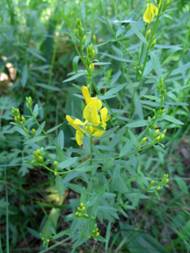
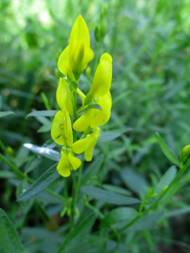
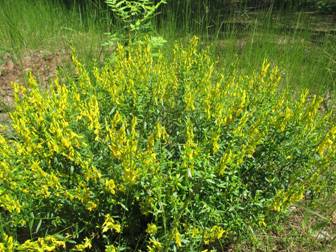
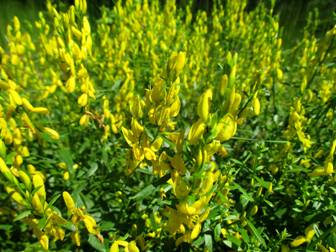
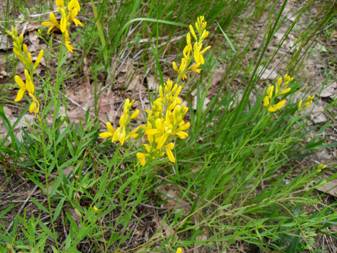
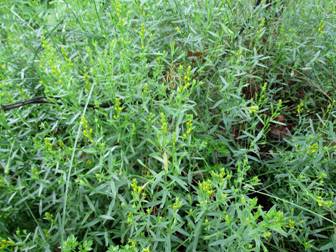
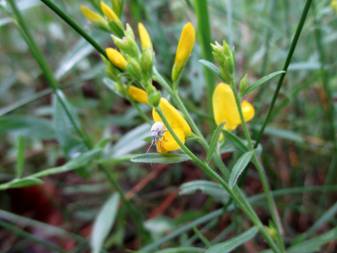
Broom (Genista), fam. Fabaceae.
Broom is often confused with Tagasaste. The difference between these alike shrubs is in the details of flower construction. But in most cases, tagasaste can be easily distinguished by ternary leaves, while broom has narrow simple leaves (which is quite rare for the legume family). Besides, broom blooms one month later. The etymology of Russian/Ukrainian name of this plant is related to spikes that some broom species have. However, the Dyer's Broom (Dyer's Greenweed, Genista tinctoria), which is evidently the only species present around Kyiv, has no spikes. It loves full sun and is drought-resistant.
Broom is considered a toxic plant, though young shoots with flowers can be consumed after special treatment (pickling). But it is strongly undesirable to consume its seeds. Dyer's broom is used as a blood-stopping, choleretic, tonic, vasodilating, antibacterial, and for thyroid treatment. Sheep, goats and rabbits eat broom readily, but cows usually avoid it, and if they have no choice – their milk becomes bitterish.
From ancient times, this plant (flowers and young shoots) has been used to dye textile in yellow, due to luteolin content. Long heating (not boiling) of the fabric in the broom tincture was used. However, the whole process cannot be named completely natural, since it involves chemical additives – lime for better extraction of the colorant, and alums (aluminum salts) as a mordant.